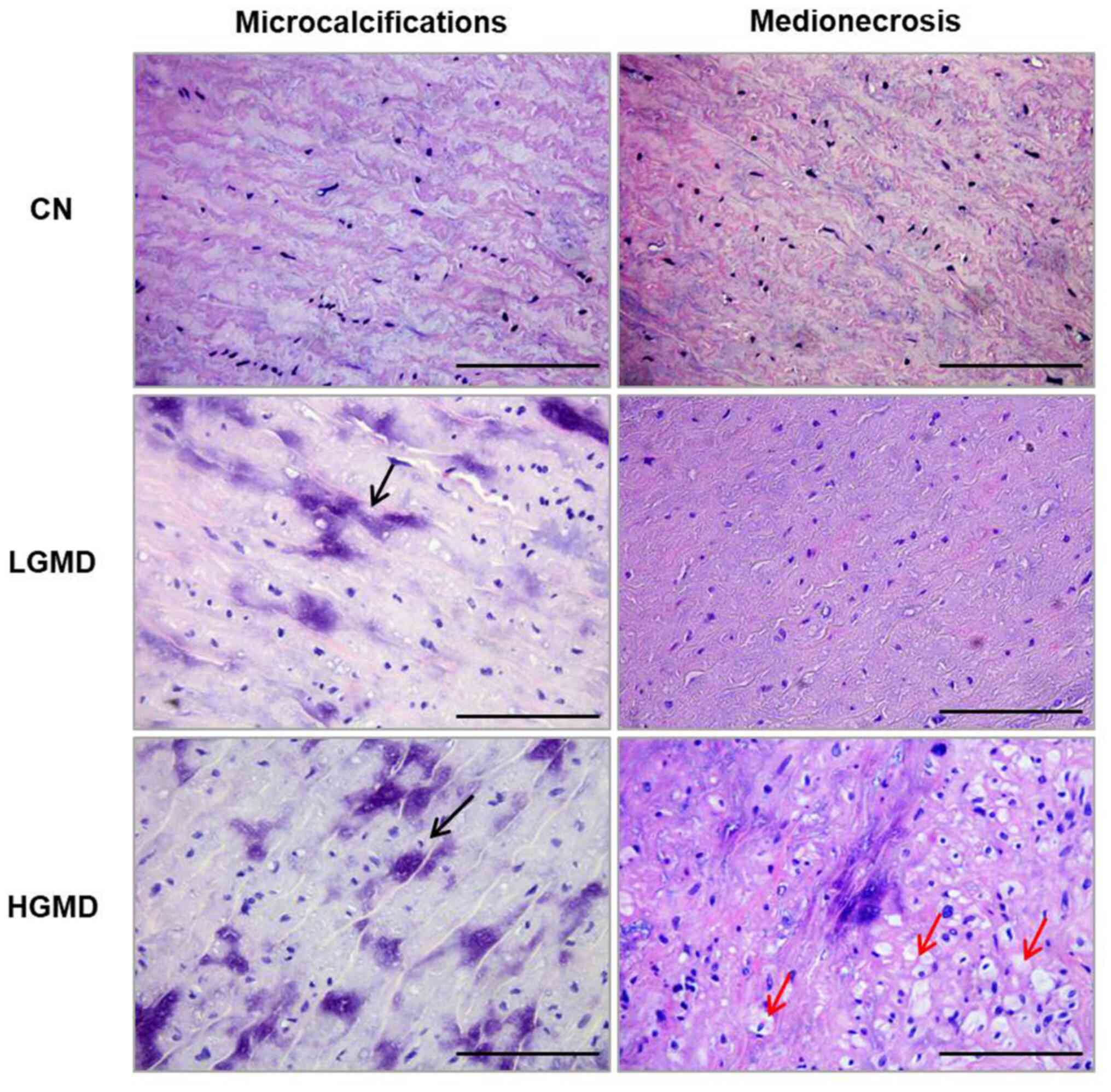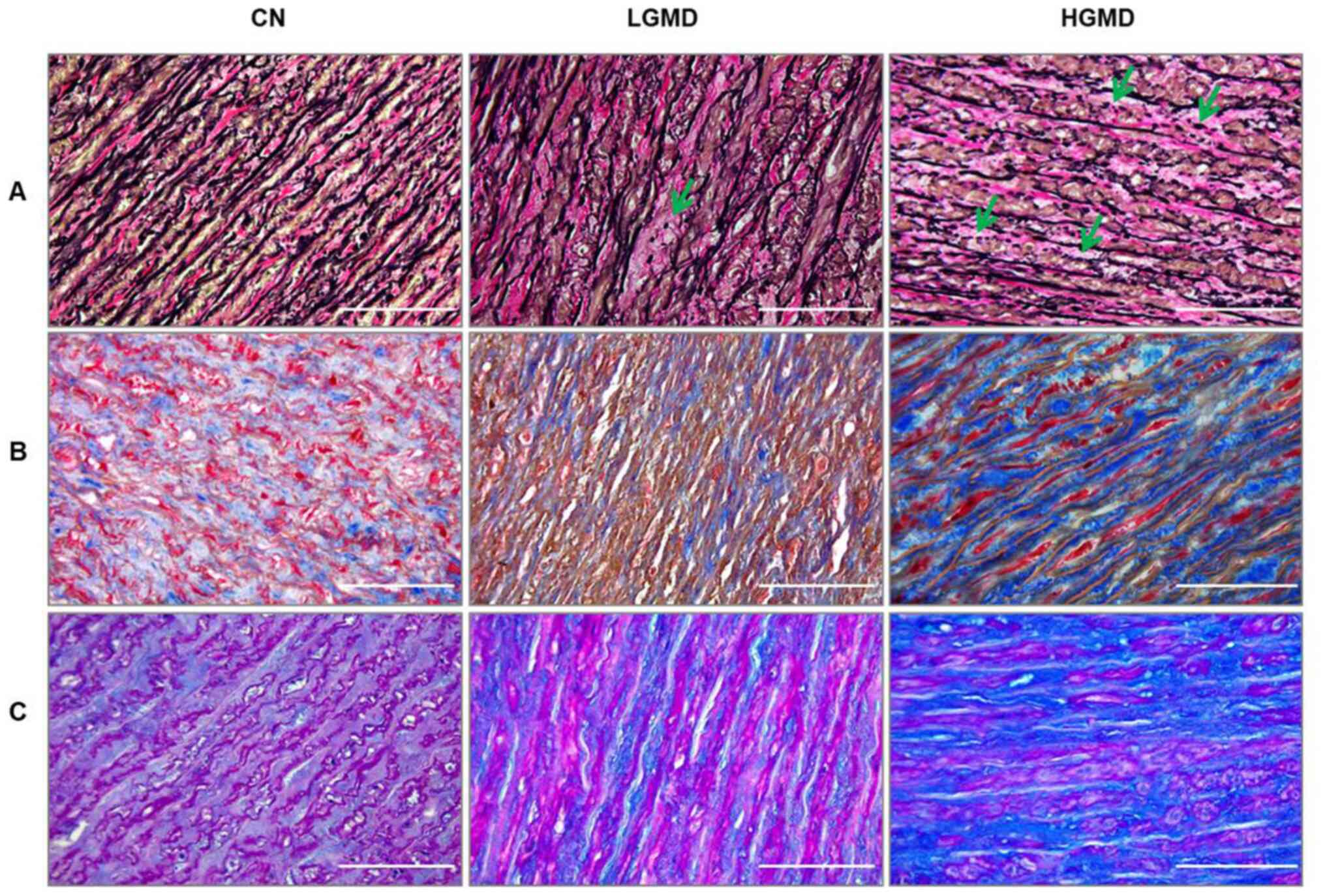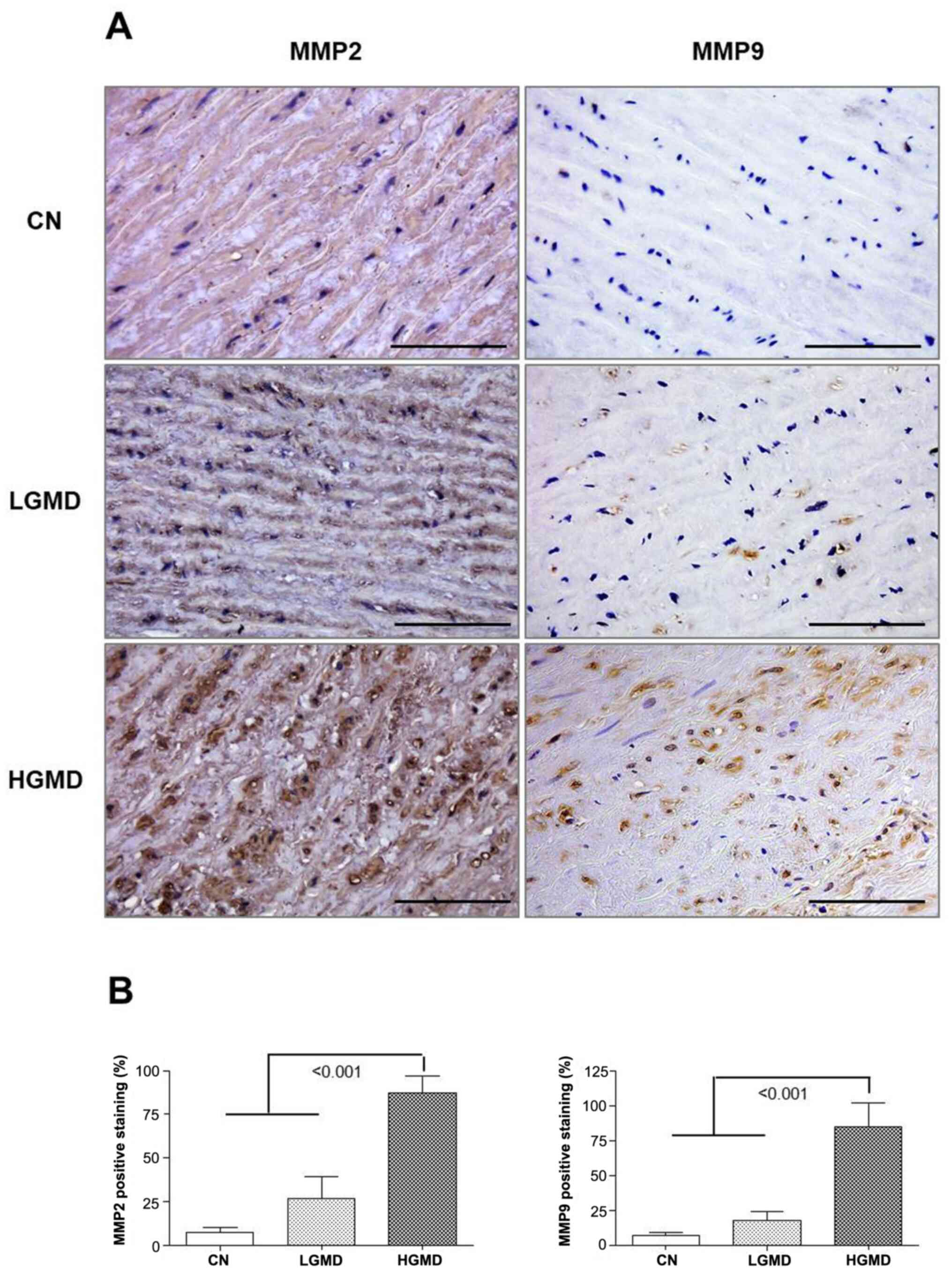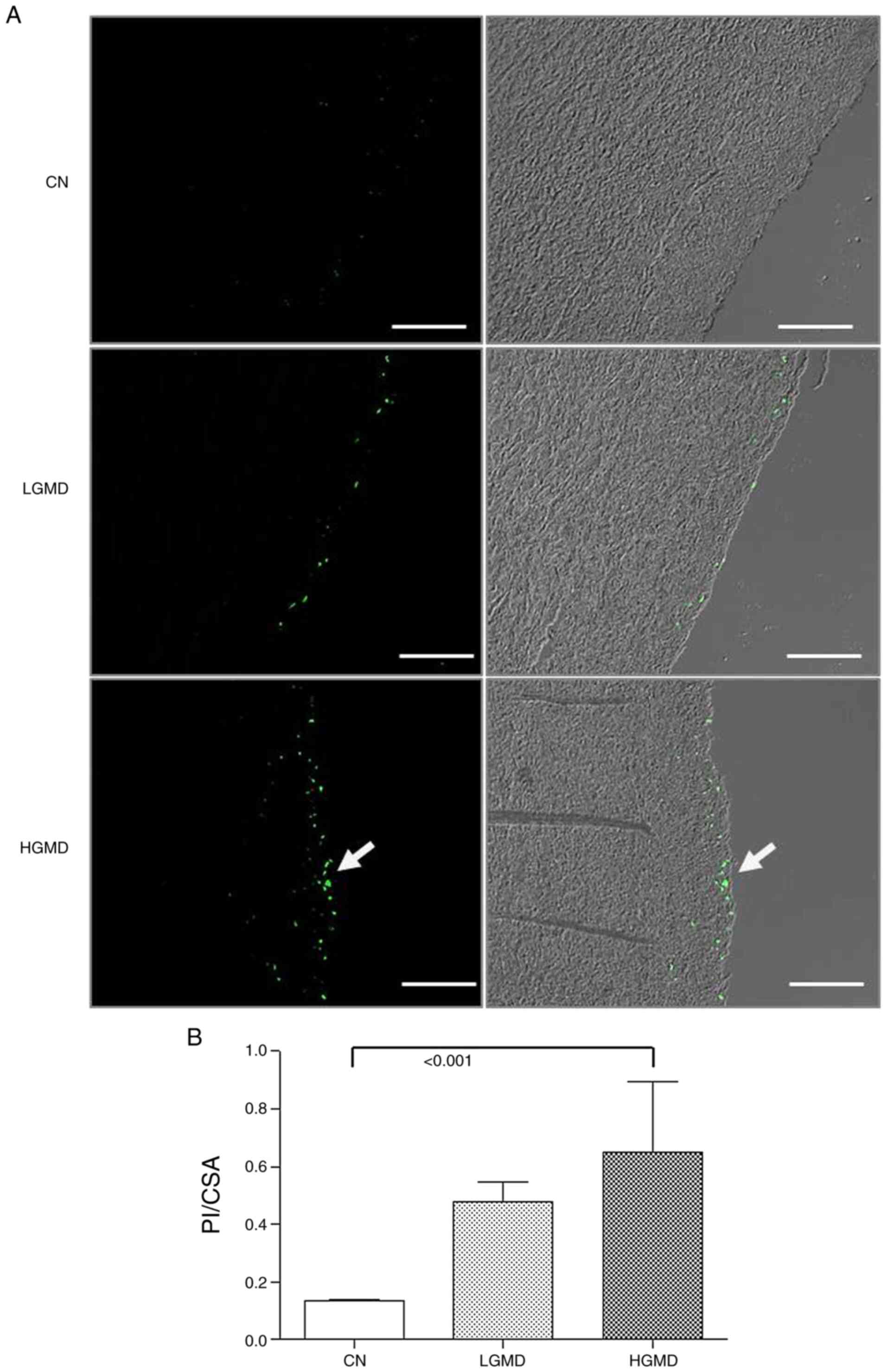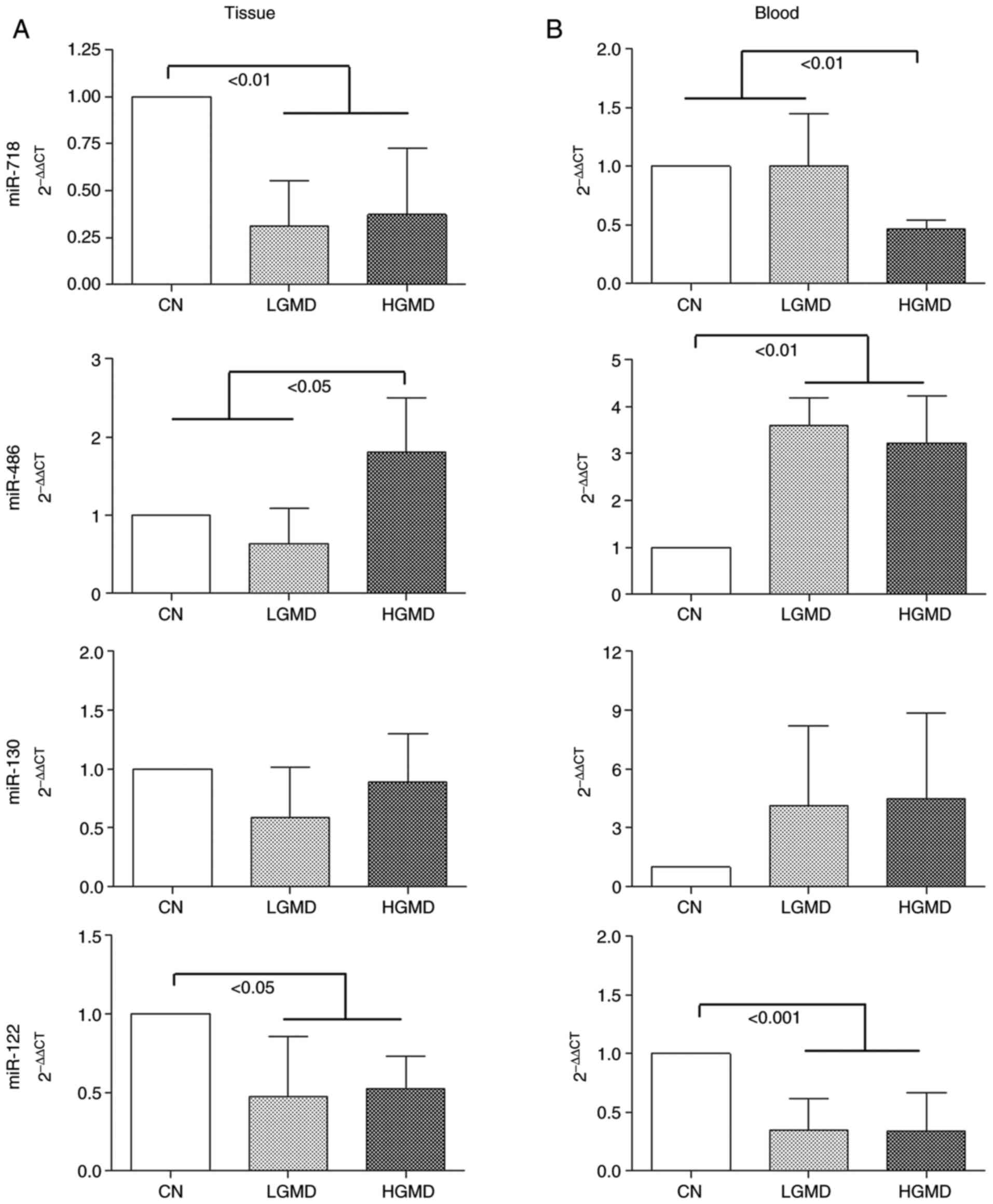|
1
|
Masri A, Svensson LG, Griffin BP and Desay
MY: Contemporary natural history of bicuspid aortic valve disease:
A systematic review. Heart. 103:1323–1330. 2017. View Article : Google Scholar : PubMed/NCBI
|
|
2
|
Michelena HI, Desjardins VA, Avierinos JF,
Russo A, Nkomo VT, Sundt TM, Pellikka PA, Tajik AJ and
Enriquez-Sarano M: Natural history of asymptomatic patients with
normally functioning or minimally dysfunctional bicuspid aortic
valve in the community. Circulation. 117:2776–2784. 2008.
View Article : Google Scholar : PubMed/NCBI
|
|
3
|
Abdulkareem N, Smelt J and Jahangiri M:
Bicuspid aortic valve aortopathy: Genetics, pathophysiology and
medical therapy. Interact Cardiovasc Thorac Surg. 7:554–559. 2013.
View Article : Google Scholar : PubMed/NCBI
|
|
4
|
Liu T, Xie M, Lv Q, Li Y, Fang L, Zhang L,
Deng W and Wang J: Bicuspid aortic valve: An update in morphology,
genetics, biomarker, complications, imaging diagnosis and
treatment. Front Physiol. 9:19212018. View Article : Google Scholar : PubMed/NCBI
|
|
5
|
Niaz T and Hagler DJ: Is there a genetic
basis to the different morphological subtypes of bicuspid aortic
valve? Ann Transl Med. 6 (Suppl 2):S1172018. View Article : Google Scholar : PubMed/NCBI
|
|
6
|
Harrison OJ, Visan AC, Moorjani N, Modi A,
Salhiyyah K, Torrens C, Ohri S and Cagampang FR: Defective NOTCH
signaling drives increased vascular smooth muscle cell apoptosis
and contractile differentiation in bicuspid aortic valve
aortopathy: A review of the evidence and future directions. Trends
Cardiovasc Med. 29:61–68. 2019. View Article : Google Scholar : PubMed/NCBI
|
|
7
|
Miller RL, Diamonstein CJ and Benheim A:
The importance of genetics and genetic counselors in the evaluation
of patients with bicuspid aortic valve and aortopathy. Curr Opin
Cardiol. 34:73–78. 2019. View Article : Google Scholar : PubMed/NCBI
|
|
8
|
Balistreri CR, Crapanzano F, Schirone L,
Allegra A, Pisano C, Ruvolo G, Forte M, Greco E, Cavarretta E,
Marullo AG, et al: Deregulation of notch1 pathway and circulating
endothelial progenitor cell (EPC) number in patients with bicuspid
aortic valve with and without ascending aorta aneurysm. Sci Rep.
8:138342018. View Article : Google Scholar : PubMed/NCBI
|
|
9
|
Sievers HH, Stierle U, Hachmann RMS and
Charitos El: New insights in the association between bicuspid
aortic valve phenotype, aortic configuration and valve
haemodynamics. Eur J Cardiothorac Surg. 49:439–446. 2016.
View Article : Google Scholar : PubMed/NCBI
|
|
10
|
McKusick VA: Association of congenital
bicuspid aortic valve and Erdheim's cystic medial necrosis. Lancet.
1:1026–1027. 1972. View Article : Google Scholar : PubMed/NCBI
|
|
11
|
Kouchoukos NT, Wareing TH, Murphy SF and
Perrillo JB: Sixteen-year experience with aortic root replacement.
Results of 172 operations. Ann Surg. 214:308–318. 1991. View Article : Google Scholar : PubMed/NCBI
|
|
12
|
Bellavia M, Rappa F, Lo Bello M, Brecchia
G, Tomasello G, Leone A, Spatola G, Uzzo ML, Bonaventura G, Davis
S, et al: Lactobacillus casei and Bifidobacterium lactis
supplementation reduces tissue damage of intestinal mucosa and
liver after 2,4,6-trinitrobenzenesulfonic acid treatment in mice. J
Biol Regul Homeost Agents. 28:251–261. 2014.PubMed/NCBI
|
|
13
|
Schlatmann TJ and Becker AE: Histologic
changes in the normal aging aorta: Implications for dissecting
aortic aneurysm. Am J Cardiol. 39:13–20. 1977. View Article : Google Scholar : PubMed/NCBI
|
|
14
|
de Sa M, Moshkovitz Y, Butany J and David
TE: Histologic abnormalities of the ascending aorta and pulmonary
trunk in patients with bicuspid aortic valve disease: Clinical
relevance to the ross procedure. J Thorac Cardiovasc Surg.
118:588–594. 1999. View Article : Google Scholar : PubMed/NCBI
|
|
15
|
Barone R, Rappa F, Macaluso F, Bavisotto
CC, Sangiorgi C, Di Paola G, Tomasello G, Di Felice V, Marcianò V,
Farina F, et al: Alcoholic liver disease: A mouse model reveals
protection by lactobacillus fermentum. Clin Transl Gastroenterol.
7:e1382016. View Article : Google Scholar : PubMed/NCBI
|
|
16
|
Rappa F, Sciume C, Lo Bello M, Bavisotto
CC, Gammazza AM, Barone R, Campanella C, Davis S, Carini F, Zarcone
F, et al: Comparative analysis of Hsp10 and Hsp90 expression in
healthy mucosa and adenocarcinoma of the large bowel. Anticancer
Res. 34:4153–4159. 2014.PubMed/NCBI
|
|
17
|
Barone R, Pitruzzella A, Gammazza AM,
Rappa F, Salerno M, Barone F, Sangiorgi C, D'Amico D, Locorotondo
N, Di Gaudio F, et al: Nandrolone decanoate interferes with
testosterone biosynthesis altering blood-testis barrier components.
J Cell Mol Med. 21:1636–1647. 2017. View Article : Google Scholar : PubMed/NCBI
|
|
18
|
Wu J, Song HF, Li SH, Guo J, Tsang K,
Tumiati L, Butany J, Yau TM, Ouzounian M, Fu S, et al: Progressive
aortic dilation is regulated by mir-17-associated miRNAs. J Am Coll
Cardiol. 678:2965–2977. 2016. View Article : Google Scholar : PubMed/NCBI
|
|
19
|
Ikonomidis JS, Ivey CR, Wheeler JB,
Akerman AW, Rice A, Patel RK, Stroud RE, Shah AA, Hughes CG,
Ferrari G, et al: Plasma biomarkers for distinguishing etiologic
subtypes of thoracic aortic aneurysm disease. J Thorac Cardiovasc
Surg. 145:1326–1333. 2013. View Article : Google Scholar : PubMed/NCBI
|
|
20
|
Martínez-Micaelo N, Beltrán-Debón R,
Baiges I, Faiges M and Alegret JM: Specific circulating microRNA
signature of bicuspid aortic valve disease. J Transl Med.
15:762017. View Article : Google Scholar : PubMed/NCBI
|
|
21
|
Livak KJ and Schmittgen TD: Analysis of
relative gene expression data using real-time quantitative PCR and
the 2(-Delta Delta C(T)) method. Methods. 25:402–408. 2001.
View Article : Google Scholar : PubMed/NCBI
|
|
22
|
Agresti A: Analysis of Ordinal Categorical
Data. 2nd edition. Wiley; New York, NY: 2010, View Article : Google Scholar
|
|
23
|
Allison PD: Logistic Regression Using SAS:
Theory and Application. 2nd edition. SAS Institute Inc.; Cary, NC:
2012
|
|
24
|
Hosmer DW Jr and Lemeshow S: Applied
Logistic Regression. 3rd edition. John Wiley & Sons; New York,
NY: 2013, View Article : Google Scholar
|
|
25
|
Baumgartner H, Falk V, Bax JJ, De Bonis M,
Hamm C, Holm PJ, Iung B, Lancellotti P, Lansac E, Muñoz DR, et al:
ESC/EACTS Guidelines for the management of valvular heart disease.
Eur Heart J. 38:2739–2791. 2017. View Article : Google Scholar : PubMed/NCBI
|
|
26
|
Elefteriades JA: Natural history of
thoracic aortic aneurysms: Indications for surgery, and surgical
versus non-surgical risks. Ann Thorac Surg. 74:S1877–S1880. 2002.
View Article : Google Scholar : PubMed/NCBI
|
|
27
|
Svensson LG and Khitin L: Aortic
cross-sectional area/height ratio timing of aortic surgery in
asymptomatic patients with Marfan syndrome. J Thorac Cardiovasc
Surg. 123:360–361. 2002. View Article : Google Scholar : PubMed/NCBI
|
|
28
|
Gott VL, Greene PS, Alejo DE, Cameron DE,
Naftel DC, Miller DC, Gillinov AM, Lashinger JC and Pyeritz RE:
Replacement of the aortic root in patients with Marfan's syndrome.
New Engl J Med. 340:1307–1313. 1999. View Article : Google Scholar : PubMed/NCBI
|
|
29
|
Pape LA, Tsai TT, Isselbacher EM, Oh JK,
O'Gara PT, Evangelista A, Fattori R, Meinhardt G, Trimarchi S,
Bossone E, et al: Aortic diameter ≥5.5 cm is not a good predictor
of type A aortic dissection: Observations from the international
registry of acute aortic dissection (IRAD). Circulation.
116:1120–1127. 2007. View Article : Google Scholar : PubMed/NCBI
|
|
30
|
Etz CD, Haunschild J, Girdauskas E, Corte
AD, Fedak PWM, Schäfers HJ, Sundt TM and Borger MA: Surgical
management of the aorta in BAV patients. Prog Cardiovasc Dis.
63:475–481. 2020. View Article : Google Scholar : PubMed/NCBI
|
|
31
|
Pisano C, Maresi E, Balistreri CR, Candore
G, Merlo D, Fattouch K, Bianco G and Ruvolo G: Histological and
genetic studies in patients with bicuspid aortic valve and
ascending aorta complications. Interact Cardiovas Thorac Surg.
14:300–306. 2012. View Article : Google Scholar : PubMed/NCBI
|
|
32
|
Siu SC and Silversides CK: Bicuspid aortic
valve disease. J Am Coll Cardiol. 55:2789–2800. 2010. View Article : Google Scholar : PubMed/NCBI
|
|
33
|
Cotrufo M and Corte AD: The association of
bicuspid aortic valve disease with asymmetric dilatation of the
tubular ascending aorta: Identification of a definite syndrome. J
Cardiovasc Med (Hagerstown). 10:291–297. 2009. View Article : Google Scholar : PubMed/NCBI
|
|
34
|
Corte AD, Bancone C, Quarto C, Dialetto G,
Covino FE, Scardone M, Caianello G and Cotrufo M: Predictors of
ascending aortic dilatation with bicuspid aortic valve: A wide
spectrum of disease expression. Eur J Cardiothorac Surg.
31:397–404. 2007. View Article : Google Scholar
|
|
35
|
Girdauskas E, Schulz S, Borger MA, Mierzwa
M and Kuntze T: Transforming growth factor-beta receptor type II
mutation in a patient with bicuspid aortic valve disease and
intraoperative aortic dissection. Ann Thorac Surg. 91:e70–e71.
2011. View Article : Google Scholar : PubMed/NCBI
|
|
36
|
Thompson RW, Holmes DR, Mertens RA, Liao
S, Botney MD, Mecham RP, Welgus HG and Parks WC: Production and
localization of 92-kilodalton gelatinase in abdominal aortic
aneurysms. An elastolytic metalloproteinase expressed by
aneurysm-infiltrating macrophages. J Clin Invest. 96:318–326. 1995.
View Article : Google Scholar : PubMed/NCBI
|
|
37
|
Longo GM, Xiong W, Greiner TC, Zhao Y,
Fiotti N and Baxter BT: Matrix metalloproteinases 2 and 9 work in
concert to produce aortic aneurysms. J Clin Invest. 110:625–632.
2002. View Article : Google Scholar : PubMed/NCBI
|
|
38
|
Tamarina NA, McMillan WD, Shively VP and
Pearce WH: Expression of matrix metalloproteinases and their
inhibitors in aneurysms and normal aorta. Surgery. 122:264–271.
1999. View Article : Google Scholar : PubMed/NCBI
|
|
39
|
Fedak PW, de Sa MP, Verma S, Nili N,
Kazemian P, Butany J, Strauss BH, Weisel RD and David TE: Vascular
matrix remodeling in patients with bicuspid aortic valve
malformations: Implications for aortic dilatation. J Thorac
Cardiovasc Surg. 126:797–806. 2003. View Article : Google Scholar : PubMed/NCBI
|
|
40
|
Oury C, Servais L, Bouznad N, Hego A,
Nchimi A and Lancellotti P: MicroRNAs in valvular heart diseases:
Potential role as markers and actors of valvular and cardiac
remodeling. Int J Mol Sci. 17:11202016. View Article : Google Scholar : PubMed/NCBI
|















